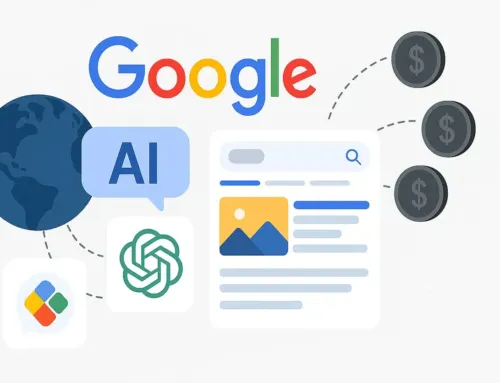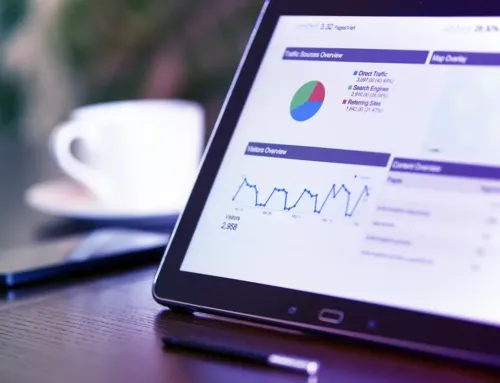Website Planning: 9 Steps to Build a Site That Works

Website planning is the first step to getting results online. The exercise is the same whether you are starting fresh or rebuilding an existing site. A solid website planning process sets the foundation for success. Good website planning is not about trends or guesswork. It is about making deliberate choices that match your business goals. It should also help users take action.
In this guide, we break down the nine essential steps to website planning that performs. From purpose to structure, content to testing—every step matters.
1. Define Your Website’s Purpose
Every effective website starts with a clear goal. Are you looking to generate leads? Sell products? Build trust with your audience? Defining your purpose shapes every decision that follows. From layout to messaging to calls to action.
Without a clear purpose, your site can feel aimless. With one, every element works together to guide visitors toward the result you want.
2. Know Your Audience
Your website is not for you. It is for your users. That is why understanding your audience is critical to successful website planning.
Ask yourself:
- Who are they?
- What problems do they want solved?
- What information do they need to take the next step?
The better you know your audience, the more effectively you can speak to them. It also helps shape your design, tone, and structure in ways that build trust and keep people engaged.
3. Do the Research
Effective website planning involves research. Look at competitors. Study successful websites in your industry. Identify what works, what does not, and where you can offer something better.
Benchmarking gives you ideas and context. It also shows what your users expect to find, which can help you avoid UX mistakes or content gaps.
4. Plan Your Site Structure and Navigation
Structure is everything in website planning. Your website should feel easy to explore, not like a maze. Plan your site map before you start building. That means mapping out your key pages: Home, About, Services, and Contact. Ensure that there is a clear path between them.
Effective navigation is simple, predictable, and user-friendly. Group content in logical categories. Avoid overwhelming menus. Your goal is to help users find what they need with as few clicks as possible.
5. Develop a Content Strategy
Content is more than text. It is the value your website delivers. And it is what drives SEO and conversions.
Start with your key pages. What questions do they need to answer? What objections do they need to overcome? Create content that speaks clearly and directly. Use headings, short paragraphs, and plain language. Include relevant keywords like “website planning,” where they fit naturally.
Plan to update your content regularly. A blog is great for this. So are case studies and client stories. Fresh content builds trust and helps your site stay visible in search.
This guide from Hubspot could help.
6. Focus on Design and User Experience
Design is not just how your website looks. It is how it works. A clean, functional design makes a strong first impression. It helps users move through your site without friction.
Make sure your site is mobile responsive, loads quickly, and works across all devices. Use clear fonts, readable colours, and intuitive layouts. Avoid clutter.
Your design should support your message, not distract from it.
7. Align With Your Marketing Strategy
Website planning must connect to your broader marketing strategy. Your website is the hub for all your marketing. Make sure it aligns.
That means:
- Adding tracking tools like Google Analytics
- Linking to your social media channels
- Including forms and lead magnets
- Supporting SEO and paid search campaigns
Your website should capture the traffic your marketing generates. Then turn that traffic into results.
8. Test Before You Launch
Testing is essential to any website planning checklist. Before you go live, test your site across browsers, devices, and screen sizes. Make sure forms work, links are correct, and pages load properly.
Check usability too. Can someone new to your brand find what they need without getting stuck? Ask others to test and give feedback. A smooth launch depends on getting these basics right.
9. Plan for Ongoing Maintenance
A website is never truly done. Ongoing website planning means regular updates, reviews, and technical care.
Keep software and plugins up to date. Monitor for broken links and outdated information. Refresh visuals and copy as your brand evolves.
Maintenance keeps your site secure, relevant, and useful. It is what keeps your investment working long term.
Website Planning Leads to Business Success.
Planning your website properly can save time, reduce stress, and increase results. When every element is mapped to a goal, your site becomes more than a brochure—it becomes a tool for success.
Let Scorched Media help you build a website that works. From strategy to launch and beyond, we bring the plan, the skills, and the support to get it right.
FAQs:
1. What is website planning and why is it important?
Website planning is the process of mapping out the goals, structure, content, and functionality of your website before design and development begin. It ensures your site is aligned with your business objectives and provides a better user experience.
2. How early should I start website planning before launching a site?
Start website planning as early as possible—ideally before any design or development work begins. A strong plan helps avoid costly revisions and keeps the project focused and efficient.
3. What are the most important steps in website planning?
Key steps include defining your website’s purpose, understanding your audience, researching competitors, structuring your site, developing a content strategy, and aligning with your marketing goals.
4. Can I skip any stages of website planning if I’m redesigning an existing site?
No. Even if you are redesigning, you should go through all the website planning steps. This ensures your new site solves old problems and meets current goals.
5. How does website planning help with SEO and lead generation?
Website planning ensures your content, structure, and design support SEO best practices. It also helps guide visitors toward key actions, improving your chances of turning traffic into leads or sales.




